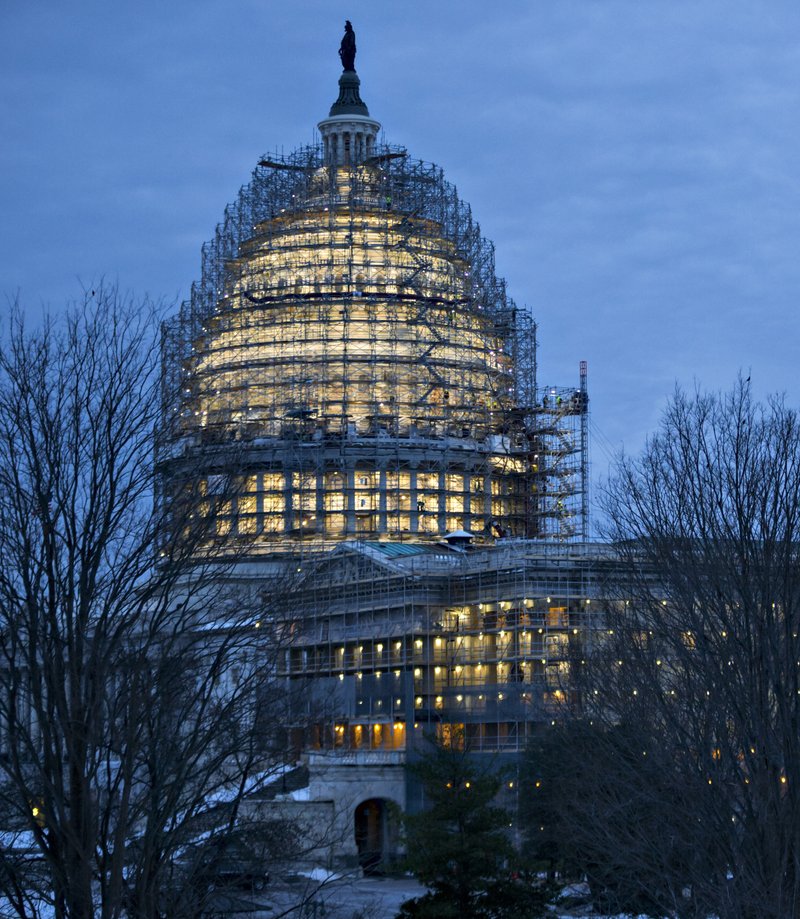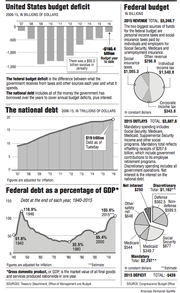WASHINGTON -- The federal government recorded a budget surplus of $55.2 billion in January, helped by a timing quirk that shifted benefit payments to December.
The Treasury Department said Wednesday that the surplus marked an improvement from January 2015, when the government recorded a deficit of $17.5 billion. Part of the improvement reflected the fact that $42 billion in benefit checks were sent out in December because the regular payment period fell on a weekend.
For the first four months of this budget year, the deficit totaled $160.4 billion, below last year's deficit of $194.2 billion for the same period.
Both President Barack Obama's administration and the Congressional Budget Office are forecasting this year's deficit to top last year's imbalance of $439.1 billion.
Through the first four months of this budget year, which began Oct. 1, government receipts total $1.08 trillion, an increase of 3.2 percent over the same period a year ago. Government outlays total $1.24 trillion, down 0.1 percent from the same period for the 2015 budget year.
In the $4.1 trillion budget for 2017 that Obama released Tuesday, he projects that the deficit will jump to $616 billion this year. The budget office is forecasting a deficit of $544 billion. The budget office projects that the deficit will keep rising and top $1 trillion again in 2022 as the costs of Social Security and Medicare climb with the retirement of baby boomers.
On Wednesday, House Republicans met to talk about the budget proposal and develop a strategy to win a consensus for an alternative budget framework.
House Speaker Paul Ryan on Wednesday said at a news conference after the Republican meeting that he is "confident" Republicans will get their 2017 version of a federal budget plan "figured out," though he seemed committed to a budget agreement that his predecessor, John Boehner, negotiated with Democrats last year. That deal sets a $1.070 trillion level for "discretionary" spending.
Some conservatives want to cut that agreed-upon spending by $30 billion.
"We believe that in order to have a good, working, viable appropriations process, we're going to appropriate to these numbers because we have an agreement on these numbers," said Ryan, a Republican from Wisconsin. He said that under the previous deal, "we think that the Senate is in a much better place than they ever were, so that we can have a functioning appropriations process."
Ryan wouldn't discuss efforts within his conference to cut spending, including requests by other Republicans for higher defense spending or what he said were "a lot of other concerns" being raised.
Most of the federal budget is committed to mandatory spending in areas such as the federal debt, Social Security, Medicare and Medicaid. About one-fourth of the budget is labeled discretionary spending and includes domestic and military programs whose budgets are set by the president and Congress.
A Budget Committee vote on a Republican version of the budget plan is being proposed for the last week in February, with the aim of sending a bill to the House floor for a vote in early March. Ryan and other leaders say they are trying to push the pace of budget action to provide more time to work on the government's 12 spending bills in an election year.
Information for this article was contributed by Martin Crutsinger of The Associated Press; by Billy House of Bloomberg News; and by Jackie Calmes of The New York Times.
A Section on 02/11/2016

